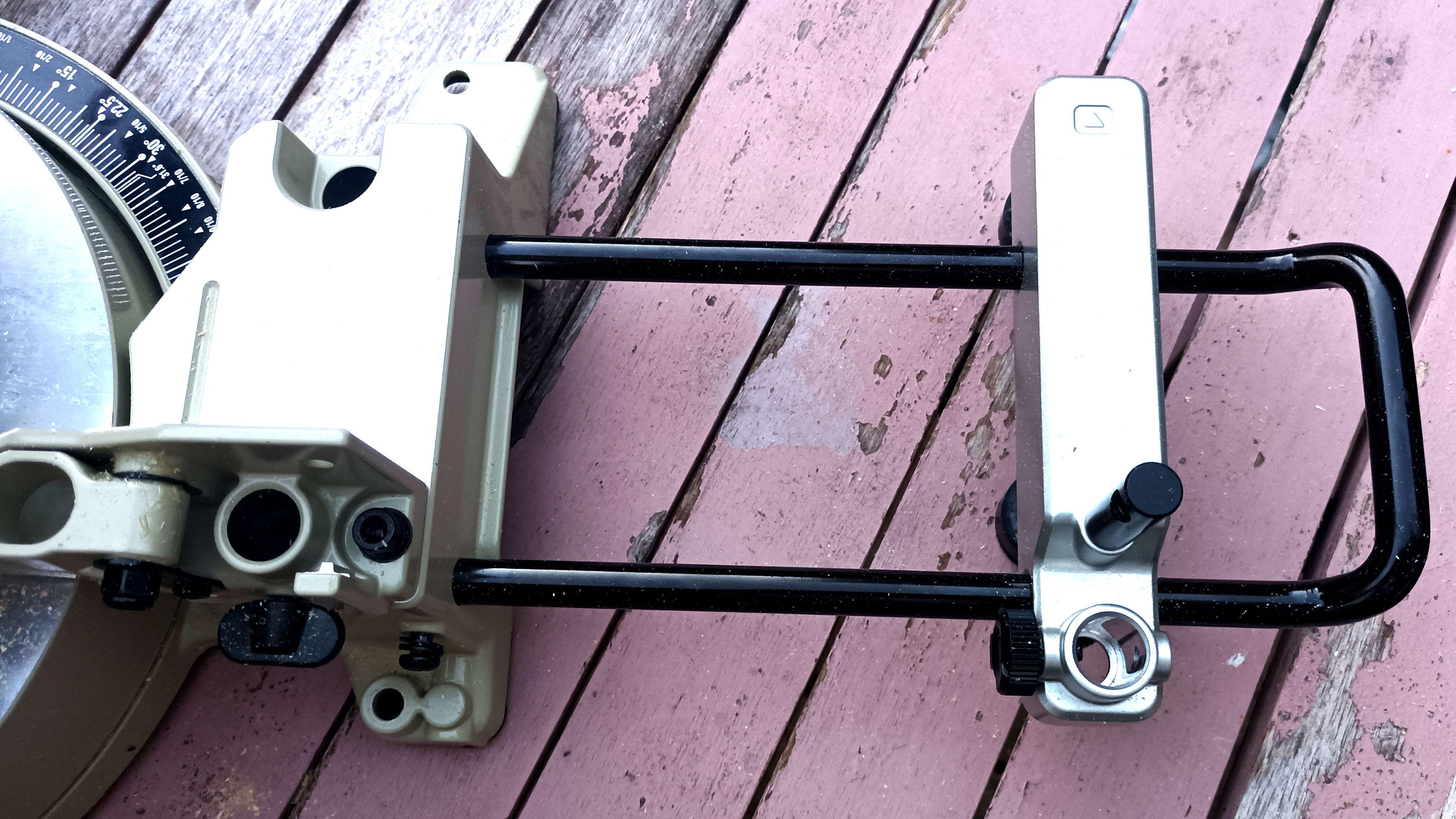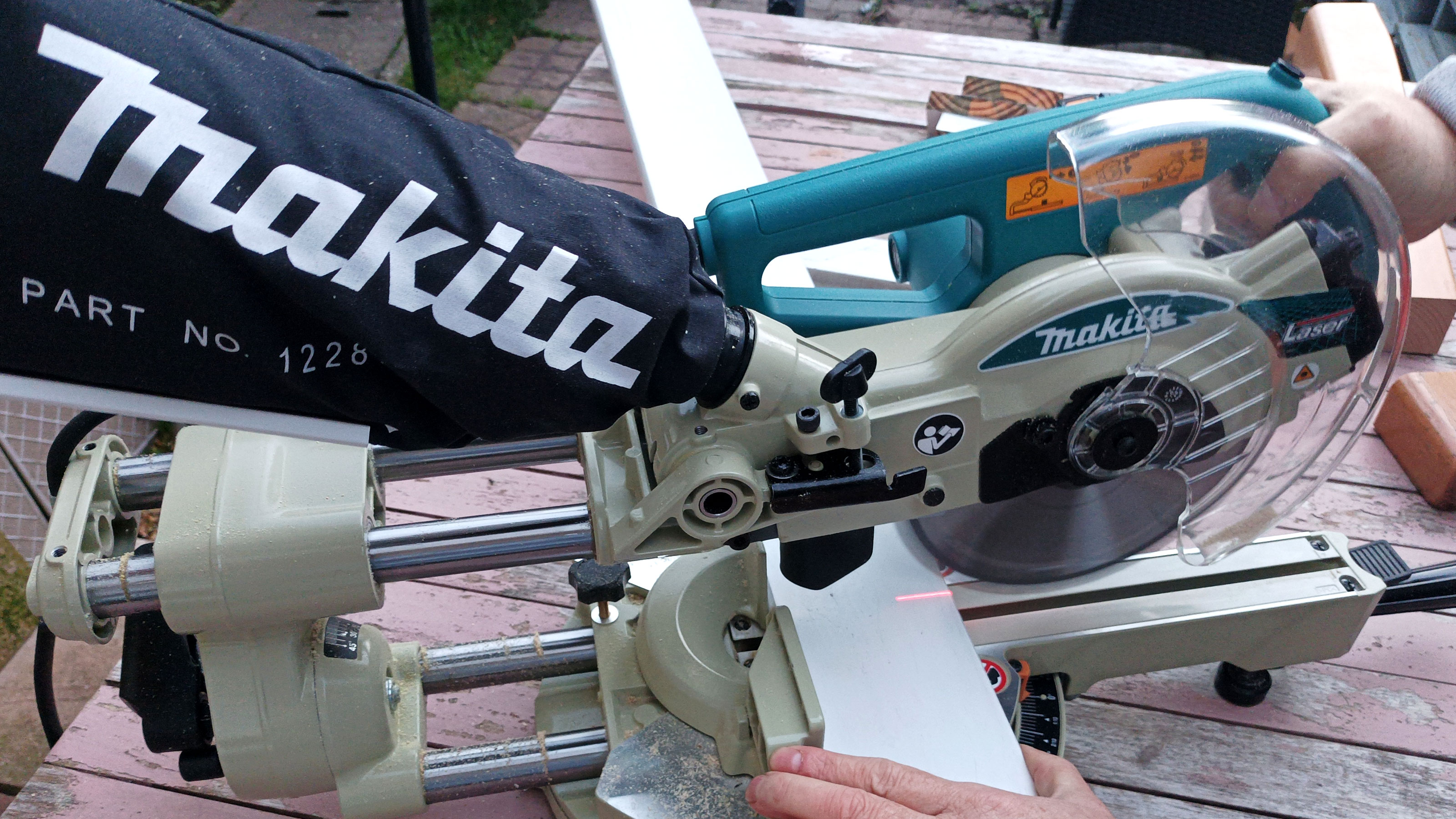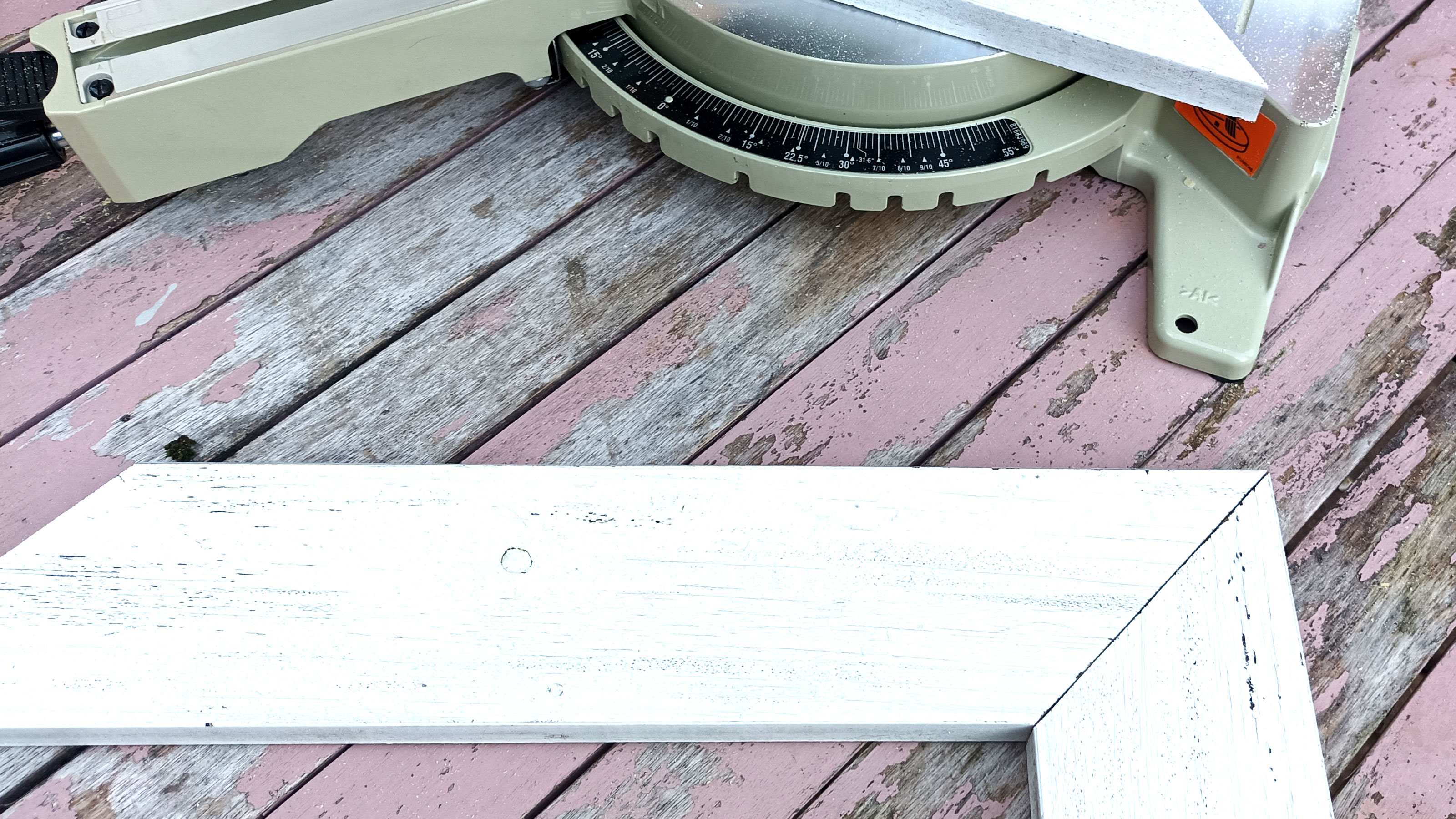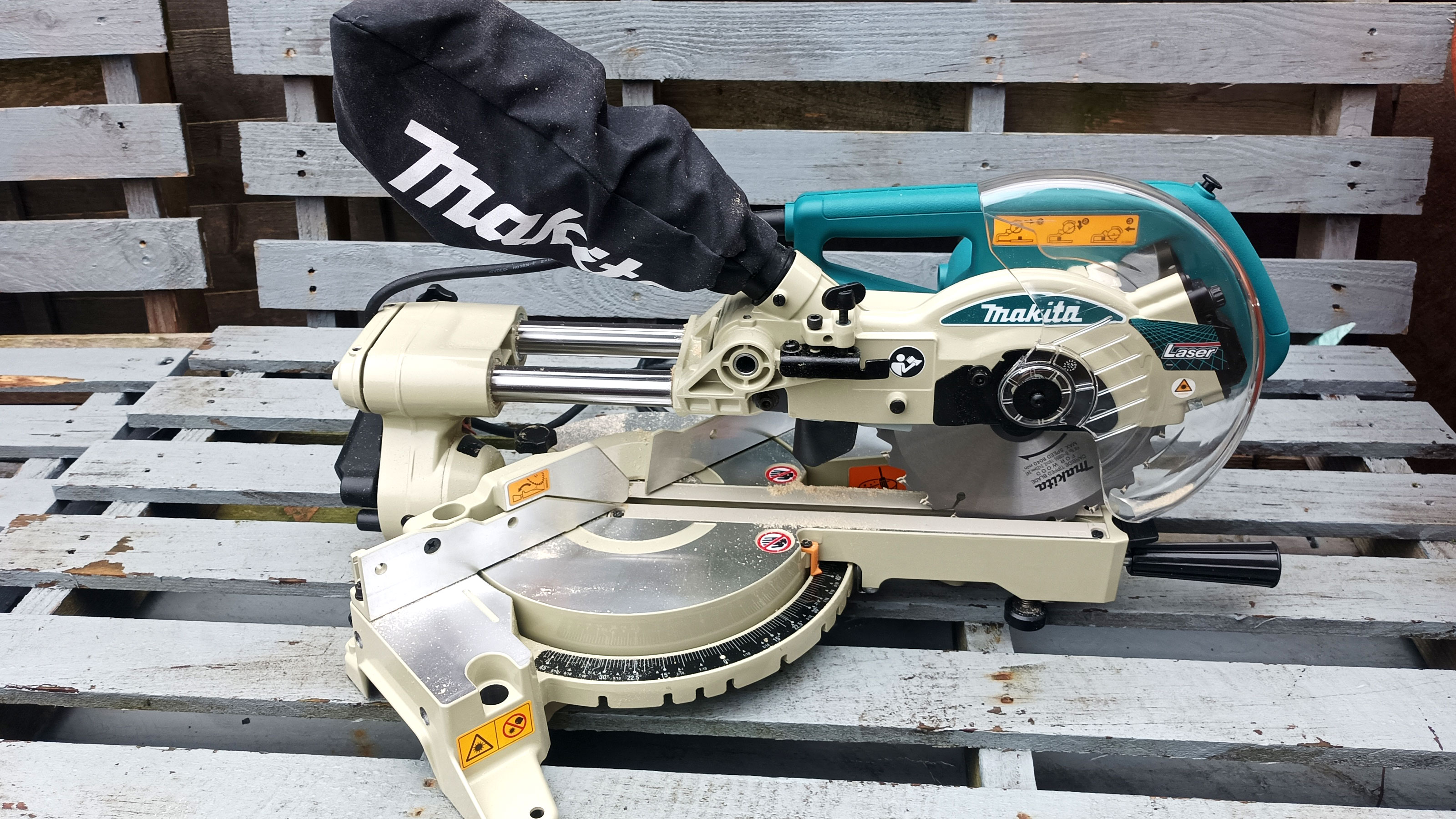Homebuilding Verdict
If you are a regular DIYer or trades looking for a reliable hard-wearing slide compound mitre saw then this offering from Makita is a great option. It is solid, well built and produces clean accurate cuts for materials up to 300mm in width and 52mm in depth. More than enough for decking, skirting boards, moulding, flooring and architrave.
Pros
- +
Great build quality
- +
Accurate clean cuts
- +
Ideal for most DIY projects
Cons
- -
Not cordless
- -
Replacing blade could have been simpler
- -
Small size blade
You can trust Homebuilding & Renovating.
Mitre saws like the Makita LS0714LN 190mm Slide Compound Mitre Saw are built for making precise cuts that other saws struggle to cope with. But what does compound mean? It means that a saw can rotate around its base and tilt the blade. It will be able to attack a whole host of different angles including common 90 degree crosscuts, 45 degree mitre cuts and angled bevel cuts.
And if you add in the slide or sliding element you get even more bang for your buck. A slide compound saw comes with a set of rails that allow a mitre saw blade to move further up and down the cutting table, letting you make wider cuts while still retaining its accuracy.
If you take on a lot of DIY projects such as cutting decking, flooring, architrave, skirting boards and decorative moulding you definitely need one of the best mitre saws on the market to get impressive results. Read on to find out what I thought of the Makita LS0714LN 190mm Slide Compound Mitre Saw.
What‘s in the Makita LS0714LN Mitre Saw box?
Capacity 90°: 52 x 300 mm
Capacity 45°: 52 x 212 mm
Power: 1010 W
No load speed: 6000 rpm min
Bevel Range: 45 / 0 degrees
Max. Mitre Range: 47 / 57 degrees
Blade Diameter: 190 mm
Bore Size: 20 mm
Power Cord: 2.5 m
Laser Class: 2
Weight: 13.5 kg
Dimensions: 670 x 430 x 458 mm
Sound Power Level: 101 dB(A)
First impressions count, before you open the packaging you want to have a good idea of what’s inside and how environmentally-friendly the manufacturer is. It's not mission critical that the packaging is perfect, but I’ve found it does reflect on what lies ahead. Budget tools typically have budget packaging and vice versa for quality well built tools.
Makita keeps it simple but informative and its green credentials aren’t harmed. The recyclable box presents the mitre saw in simple outline graphics and just enough text in a 70cm x 38.5cm x 43cm box.
Open the box and the saw sits neatly in the box with minimal packaging, just enough to keep it safe on its journey to its destination - my house. So, what’s in the box? The Makita mitre saw itself, extended to fit the box, a vertical vice (already attached to the saw), a couple of extension wings and holders and a dust extraction bag.
The Makita LS0714LN, which you can buy on Amazon, weighs in at 13.5kg, so it's not a heavyweight piece of kit, in fact its light by mitre saw standards. It’s light enough to carry to jobs off site, but does need a bit of muscle to get it out of the box.
A quick look over the Makita and a play with its core components give the impression that it's a solid, sturdy, well built piece of kit. There’s a lot of solid metal parts and few plastic components. The main body of the saw, the turn base, the sliding rails and fence are all metal, solid and sturdy. The saw handle, blade cover and kerf board are all plastic, but still tough enough for the job.

How easy is the Makita Mitre Saw to set up?
If you’re a first time user or haven’t used a mitre saw regularly, you definitely want to spend 15 minutes (or more) reading the manual to familiarise yourself with how to set up and operate the LS0714LN. I’ve used mitre saws before, but still spent 5-10 minutes flicking through the instruction manual.
That said, it's not difficult to get ready for action. Pop out the stopper pin and the saw is ready to go, play with a few thumb screws to loosen components and place on a sturdy surface and you are pretty much ready to go.
There are a couple of holes in the base that can bolt the mitre saw base to a solid surface to make sure that it doesn’t tip over. But we chose not to as we wanted to keep it portable, so we could take wherever we wanted or store when needed.
Instead we placed it on a table and used the extension wings and holder assembly to make sure that it was pretty rock solid. Adjustable bolts with rubber feet on the turn base and the extended holders meant that the machine was secure enough and wasn’t going anywhere even though it wasn’t bolted down.

What features does the Makita LS0714LN have?
This Makita model isn’t cordless, instead it boasts a 2.5m electric cord, so you are going to need an extension lead to make good use of the saw. While not so portable it does mean you have full power all the time and no need to charge up batteries.
Corded power tools are often found in budget ranges, but this isn't the case here. The Makita LS0714LN isn’t cheap compared with budget mitre saws, but at the £400 mark it is at the lower end of the price scale for Makita sliding compound mitre saws. And in the case of this Makita the price reflects the quality you are getting. You can get cheaper mitre saws but they rarely have the overall quality to match.
There’s an essential dust collector, which is easy to fit and easy to empty and collects plenty of sawdust. This is something you definitely need otherwise you’ll be seeing sawdust for a lot longer than you want to. Extension wings and holder assembly are quick and easy to install and give the saw more stability and the ability to hold longer materials. There’s an easy to use vertical vise to hold material in position if needed.
Another feature we liked was the switch trigger, which can’t be called into action until the well-positioned lock off button is pushed. The trigger has a padlock hole, so you can lock the tool to deter wannabe thieves. A simple to use – and adjustable – laser can be called into action if you want to see where a cut is going to be. Works well in dark and light conditions.

What blade does the Makita LS0714LN Mitre Saw come with?
The preinstalled blade is a Makita own brand Carbide Tipped Blade for wood with 24 teeth. This is ideal for most DIY jobs that involve wood. If you want a finer finish you can get a blade with more teeth.
The 190mm in the Makita’s name refers to the size of the blade that comes with the mitre saw. But what does this mean? The size of the blade determines what size materials you can cut with the saw. A 190mm (or 7.5-inch) blade is towards the smaller end of the scale when it comes to mitre saws.
The size of the blade and sliding compound design of the saw gives a recommended capacity of 52mm x 300mm for material that it can cut at 90 degrees i.e. straight crosscuts . So you can cut planks and boards up 300mm in width and wood up to a depth of 52mm. This changes for 45 degree bevel cuts, the depth remains the same, but the width shrinks to 212mm. In our test the stated widths were pretty accurate, but we got a little more than 52mm on depth, getting just over 60mm for crosscuts.
Changing the blade wasn’t quite as simple as we hoped, but it was pretty straightforward. There’s an Allen key stored on the saw, which you need to undo the blade cover, so you can pull back to expose the bolt holding the blade. Then you need to push the shaft lock into place, before undoing the bolt and replacing. On our model the bolt was tough to get off but we got there eventually. After replacing it's simply a matter of tightening the cover back into place.
How well does the Makita LS0714LN Mitre Saw cut?
Mitre saws are about accurate angles and clean cuts and the Mikita offered both. The turn base is silky and sturdy and getting the angle you want is easy. There are positive stops for 0, 15, 22.5, 30 and 45 degree mitre angles both left and right. This makes it easy to line up the common angles. And it's not difficult for anything between 0 and 45 degrees, with the right going up to 58 degrees.
A grip and lock lever – both made of plastic – secure the turn base. Both feel a bit lightweight, but that said worked well in our tests. But you get the feeling, a knock could break them.
Cutting was easy, push the material against the solid fence, press the lock button, pull down the saw and the blade goes through wood like a hot knife through butter. We tested the Makita on painted wood planks, decking planks, MDF skirting boards, hardwood table legs and fence posts. The cuts were clean with no discernable tear out. The sliding mechanism was sturdy and smooth giving a sense of wellbeing and achievement when I finished cutting.
How accurate was the saw? We did a quick test with two 45 degree mitres and they fitted together perfectly. Other angles lined up well with our angle ruler, but I didn’t have an electronic angle finder to test for more miniscule measuring.
To finish testing I tackled the tilt. This involved a large lever on the end of the saw. This was stiff and there’s a process to get the best out of it. But, you can remove the lever and easily and quickly reposition, which I did. Once I got it into a position I liked, it was smooth and easy to manoeuvre.
There’s 0-45 degrees here - no positive stops – but it's not difficult to get the angle you want. Again the cuts were clean with no tear out and I didn’t need to adjust the adjustable kerf board, though I did need have to move the fence to get 45 degree angles. Again tested the angle with two 45 degree cuts, which again fitted together beautifully.

Steve Jenkins is a freelance content creator with over two decades of experience working in digital and print and was previously the DIY content editor for Homebuilding & Renovating.
He is a keen DIYer with over 20 years of experience in transforming and renovating the many homes he has lived in. He specialises in painting and decorating, but has a wide range of skills gleaned from working in the building trade for around 10 years and spending time at night school learning how to plaster and plumb.
He has fitted kitchens, tiled bathrooms and kitchens, laid many floors, built partition walls, plastered walls, plumbed in bathrooms, worked on loft conversions and much more. And when he's not sure how to tackle a DIY project he has a wide network of friends – including plumbers, gas engineers, tilers, carpenters, painters and decorators, electricians and builders – in the trade to call upon.


